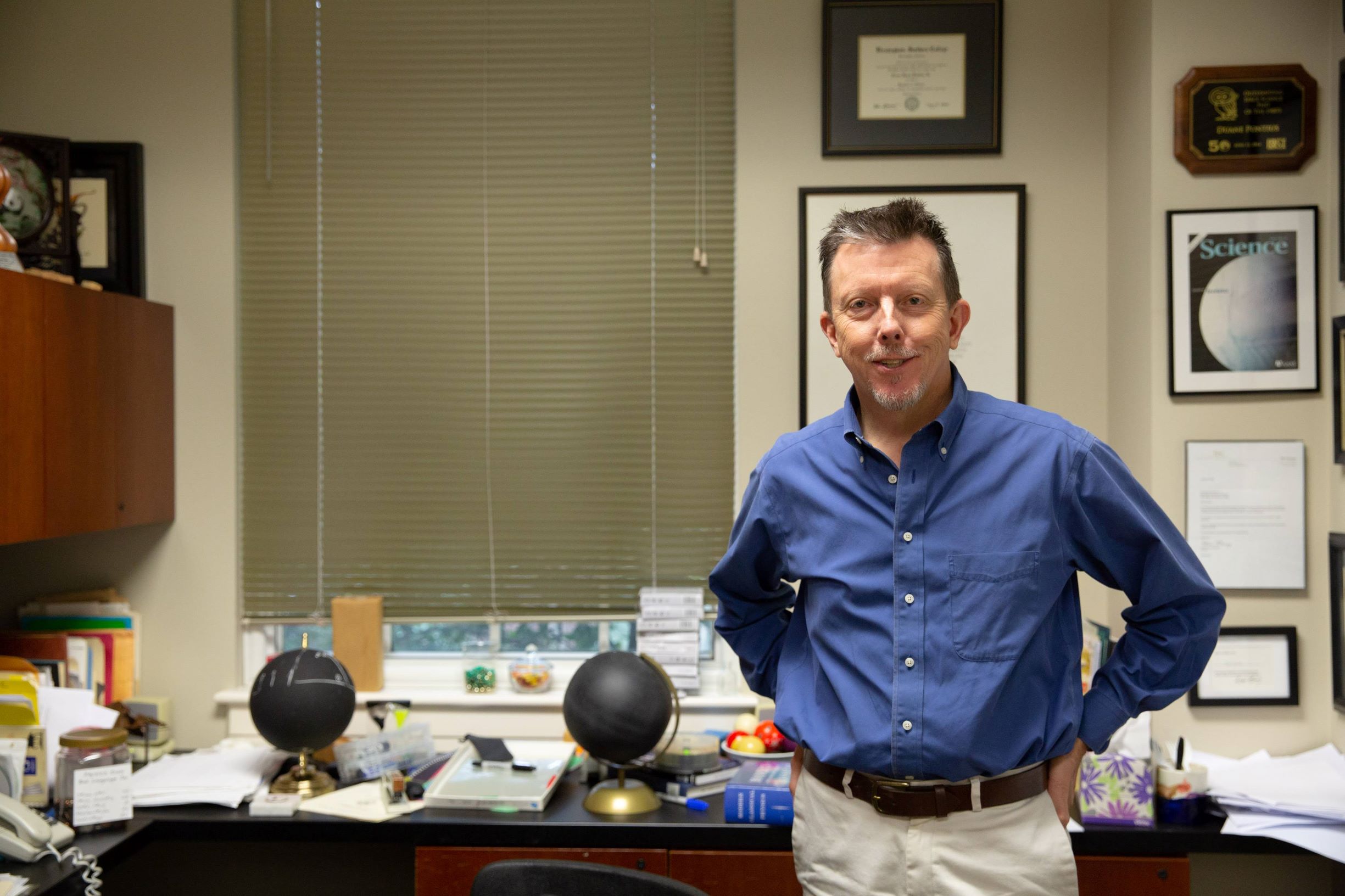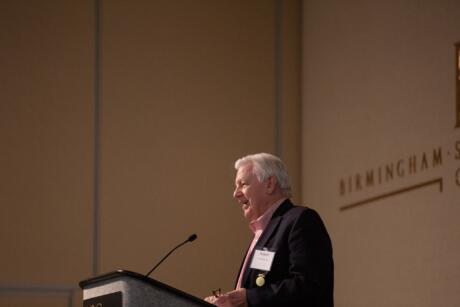Impossible Rotation

Professor Dr. Duane Pontius ’81 and two recent Birmingham-Southern College graduates have published research that significantly advances our understanding of Saturn.
Though Saturn’s rotation period was measured in the 1980s at 10 hours and 40 minutes, the 2004 measurement during NASA’s Cassini-Huygens mission was six minutes longer and varied for the remaining 13 years of Cassini’s orbit. The planet’s northern and southern hemispheres were also determined to rotate at different speeds.
Like most other researchers, Pontius, T. Morris Hackney Professor of Physics at BSC, long assumed that there must be a problem with data interpretation.
“The idea that a planet could rotate at a completely different speed over that short a period of time is too weird to actually happen,” he says. However, a presentation at a research conference in 2015 convinced him that the phenomenon was real and worth exploring.
Pontius, ready to explore ideas to explain this oddity, brought the discussion and research to his BSC students. During their summer research in 2016, physics majors Christopher Fernandez ’17 and Eli Brooks ’18 worked through the algebra and calculus to model the idea they developed with Pontius.
“When you do research like this, you not only don’t know the answer. Sometimes you don’t even know the question. You have to fumble and generate ideas that have never been thought of before,” Pontius says.
The summer before, he worked with other students to eliminate a lot of ideas without finding one that worked. However, Pontius, Fernandez, and Brooks settled on an idea, Pontius gave them a conceptual framework, and the students cranked through the mathematics in the BSC physics lounge. With guidance from Pontius, they developed a model to explain Saturn’s inconsistency in two months, described in the paper’s plain language summary:
“As charged particles move through Saturn’s magnetic field (its “magnetosphere”), they change rotational speed, just as ballet dancers change speed by shifting their limbs. This puts electromagnetic stress on the planet’s atmosphere and causes a high‐altitude layer to rotate more slowly. The summer hemisphere is more directly exposed to solar ultraviolet radiation, which makes it conduct electricity better. Electrical currents go preferentially to that hemisphere which slows the atmosphere more than in the winter hemisphere. The result is a longer summer period compared to the winter. As the seasons change, the rotation periods should swap between North and South, as is observed.”
With the research and proposed explanation, the three co-authors have opened the door for other questions and curiosities regarding the gaseous planet. Pontius now plans to study Saturn’s magnetic field, which has no tilt and is perfectly symmetric yet sends out periodic signals. He will again open up the process to BSC student researchers.
“We solved one basic mystery, but there are other basic mysteries that we can now go on and investigate,” Pontius says. “We now have a start to keep looking at Saturn.”
Find a more in-depth look at the research conclusions here.











// Comments are closed //